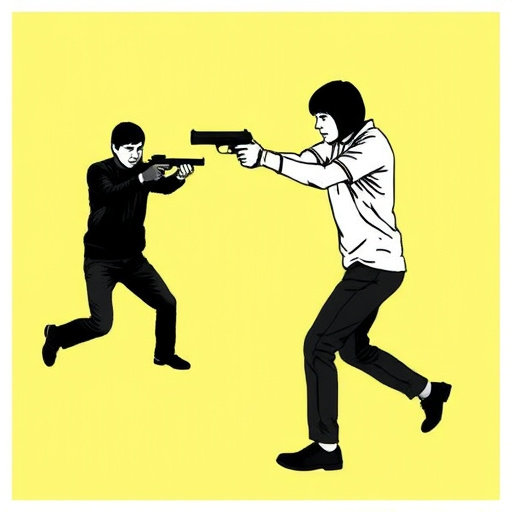While Tasers use electrical impulses through probes for muscle spasms, stun guns generate powerful electric charges to disrupt nerve signals. Best stun guns for urban safety are compact, easily carried, with advanced safety mechanisms. They offer a non-lethal self-defense option against close threats in cities, requiring legal understanding and responsible ownership practices.
In today’s urban landscape, self-defense is a crucial consideration for personal safety. Among the various tools available, Tasers and stun guns stand out as popular options. This article delves into the key differences between these two devices, examining their unique features, effectiveness, and legal implications. We explore why understanding the distinctions matters when choosing the best stun guns for urban safety, empowering individuals to make informed decisions for their protection.
- Understanding Tasers and Stun Guns: Key Differences
- Stun Gun Features: Effectiveness and Safety Measures
- Choosing the Best Urban Self-Defense Weapon
- Legal Considerations for Owning Stun Devices
Understanding Tasers and Stun Guns: Key Differences
Tasers and stun guns are both non-lethal weapons designed to temporarily incapacitate individuals, but they operate on distinct principles. Tasers, formally known as Conductivity Energy Devices (CEDs), use electrical impulses to disrupt muscular control, causing the target to experience muscle spasms and temporary paralysis. This disruption is achieved through two small probes that fire into the target, delivering a high-voltage, low-current electric pulse.
Stun guns, on the other hand, operate by generating a powerful electric charge that disrupts the nervous system’s ability to transmit signals to muscles. Unlike tasers, stun guns do not require physical contact to be effective; instead, they use a focused beam of electricity to create a strong shockwave that can incapacitate a target from a distance. This makes them particularly appealing for urban safety, offering a convenient and reliable means to deter potential threats without the need for close-quarters engagement. Among the best stun guns for urban safety are those that provide a strong electric shock while also featuring compact designs for easy carriage and advanced safety features to prevent accidental activation.
Stun Gun Features: Effectiveness and Safety Measures
Stun guns, also known as electronic control devices (ECDs), are designed to incapacitate an assailant through powerful electrical pulses. When it comes to urban safety, choosing the best stun guns is crucial for individuals seeking personal protection in high-risk environments. The effectiveness of a stun gun lies in its ability to deliver a strong jolt, temporarily paralyzing the target without causing permanent harm. Modern stun guns are often compact and easily concealable, making them popular choices for self-defense enthusiasts and urban dwellers looking to enhance their personal security.
Safety measures are paramount when considering stun guns, especially for non-lethal self-defense. Many models incorporate safety features like lock mechanisms and burst settings to ensure the device is used only in emergency situations. Additionally, training and familiarization with the weapon’s range, activation methods, and legal implications are essential for responsible ownership. Understanding these aspects can contribute to effective urban safety strategies, empowering individuals to protect themselves while adhering to legal guidelines.
Choosing the Best Urban Self-Defense Weapon
When it comes to self-defense in urban settings, choosing the right tool is paramount. Among the options available, stun guns and Tasers stand out as popular choices due to their non-lethal capabilities. However, there are distinct differences that set them apart, making one more suitable for specific situations than the other.
For urban safety, the best stun guns offer a powerful yet controlled electric shock, temporarily incapacitating an attacker without causing severe harm. They are compact and easy to carry, allowing users to be prepared in close-quarters environments like cities. In contrast, Tasers fire two thin probes connected by wires, delivering a more intense pulse that can disable larger targets but may not be as versatile in tight spaces. Consider your surroundings, the potential threat level, and personal comfort when selecting between stun guns and Tasers for optimal urban self-defense.
Legal Considerations for Owning Stun Devices
The legal landscape surrounding stun devices, including tasers and stun guns, varies significantly across jurisdictions. In many countries and states, owning a stun device for self-defense is legal as long as certain criteria are met. For instance, some regions require users to be over a specific age or possess a permit. Others might restrict the power output of stun devices to ensure they don’t match the force of a stun gun.
When considering the best stun guns for urban safety, it’s crucial to stay informed about local laws. Failure to comply with these regulations can result in hefty fines or even criminal charges. Users should consult their area’s legal code and seek professional advice if needed to ensure they’re acting within the law while prioritizing their safety and well-being.
When it comes to self-defense in urban settings, understanding the nuances between Tasers and stun guns is paramount. This article has explored their distinct features, with a focus on helping individuals make informed decisions about the best stun guns for urban safety. While Tasers offer immobilization through neuromuscular disruption, stun guns deliver a powerful electric shock, temporarily disorienting an attacker. Choosing the right device depends on personal preference and legal considerations. Remember, staying informed and prepared is key to enhancing your urban safety, so research thoroughly before making a decision.
